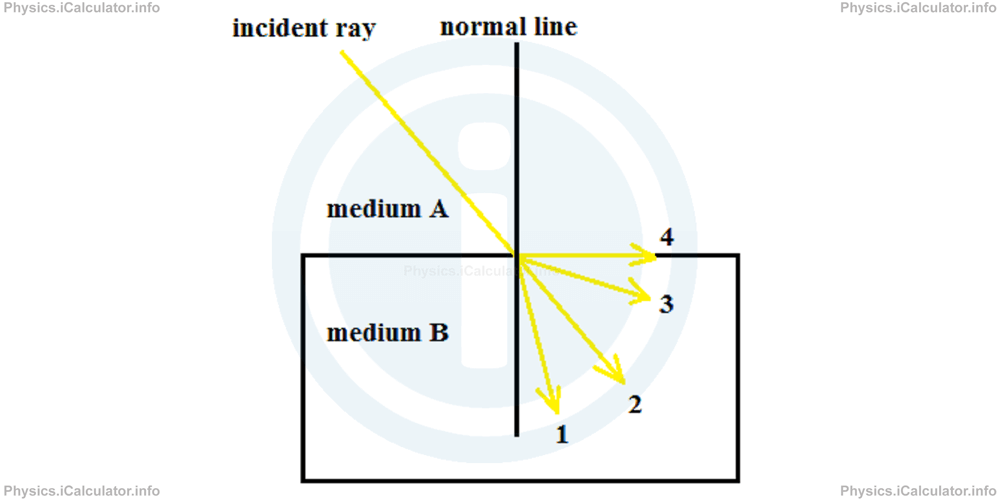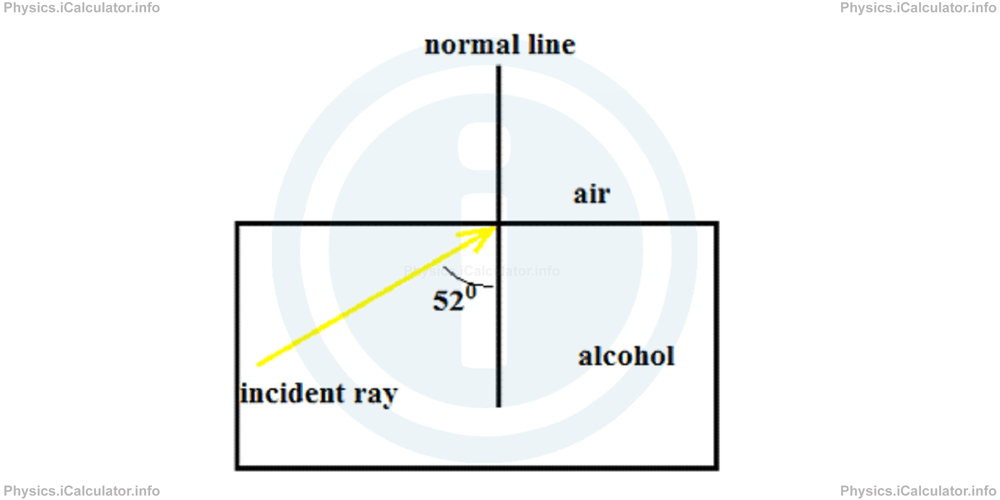Menu
Refraction of Light Practice Questions
Please provide a rating, it takes seconds and helps us to keep this resource free for all to use
The following physics revision questions are provided in support of the physics tutorial on Refraction of Light. In addition to this tutorial, we also provide revision notes, a video tutorial, revision questions on this page (which allow you to check your understanding of the topic) and calculators which provide full, step by step calculations for each of the formula in the Refraction of Light tutorials. The Refraction of Light calculators are particularly useful for ensuring your step-by-step calculations are correct as well as ensuring your final result is accurate.
Not sure on some or part of the Refraction of Light questions? Review the tutorials and learning material for Refraction of Light
| Tutorial ID | Title | Tutorial | Video Tutorial | Revision Notes | Revision Questions | |
|---|---|---|---|---|---|---|
| 12.3 | Refraction of Light |
Physics Revision Questions for Refraction of Light
1. A light ray passes from an optical transparent medium to another as shown in the figure. Which of the following rays CANNOT be a ray of diffraction?

- Ray 1
- Ray 2
- Ray 3
- Ray 4
Correct Answer: B
2. The speed of light in alcohol is 2.21 × 108 m/s. What is the maximum angle for which a light ray emitted by a source inside alcohol leaves the alcohol and moves into air?
- 41.30
- 43.30
- 45.30
- 47.30
Correct Answer: D
3. A light ray is emitted by a source inside alcohol (ca = 221 000 km/s) at 520 to the normal line drawn at the alcohol's surface. Which of the following is TRUE about the angle of refraction?

- The angle of refraction is 520 too, as a total internal reflection does occur
- The angle of refraction is 380
- There is no refraction but we can give an artificial meaning to the angle of refraction by taking the supplementary of the reflection angle, i.e. the angle 1280
- There is no refraction but we can give an artificial meaning to the angle of refraction by taking the supplementary of the reflection angle, i.e. the angle 1420
Correct Answer: D
Whats next?
Enjoy the "Refraction of Light" practice questions? People who liked the "Refraction of Light" practice questions found the following resources useful:
- Practice Questions Feedback. Helps other - Leave a rating for this practice questions (see below)
- Optics Physics tutorial: Refraction of Light. Read the Refraction of Light physics tutorial and build your physics knowledge of Optics
- Optics Revision Notes: Refraction of Light. Print the notes so you can revise the key points covered in the physics tutorial for Refraction of Light
- Check your calculations for Optics questions with our excellent Optics calculators which contain full equations and calculations clearly displayed line by line. See the Optics Calculators by iCalculator™ below.
- Continuing learning optics - read our next physics tutorial: Interference and Diffraction of Light
Help others Learning Physics just like you
Please provide a rating, it takes seconds and helps us to keep this resource free for all to use
We hope you found this Physics tutorial "Refraction of Light" useful. If you did it would be great if you could spare the time to rate this physics tutorial (simply click on the number of stars that match your assessment of this physics learning aide) and/or share on social media, this helps us identify popular tutorials and calculators and expand our free learning resources to support our users around the world have free access to expand their knowledge of physics and other disciplines.